My Musical Career | Part Thirty-Three
The Year 1987 – Part Three
As I mentioned in the last two blog posts, the year 1987 was an extremely busy year musically for me and for the orchestra that I had the honor to be a part of. Our 1987 US tour was the subject of the last post, and I left you all hanging just at the point we were to head eastward on out tour progress. Our reception in Chicago, Indianapolis, Muskegon, Wheaton, Ann Arbor and Detroit was very good. It was time for us to see how well would do in the East.
We were scheduled to travel eastward by bus, and play a concert in Lima and Sandusky, Ohio before moving onto Providence, Rhode Island, Brookville, Long, Island, New York City (Carnegie Hall) and ending up with a concert in Lancaster, Pennsylvania.
I do remember the concert in the Lima/Sandusky area as being routine – well played, but nothing particularly memorable about them. I do remember that we had an off day in Sndusky, and we were put up in a motel so far from any significant shopping or museums and other points of interest. Most of us in the orchestra spent the day in the motel just relaxing, eating and lounging about and getting ready for the next move eastward, which would take us to Providence, Rhode Island. We finished up our obligations in Ohio and flew on to Newark, New Jersey, where the orchestra would board busses for the trip to Providence, Rhode Island. I was met in Newark by my good friend and former student Harry Teahan, and I drove to Providence with him rather than travel with the orchestra, arranging for Harry to drop me at the hotel later. Harry and I first drove to the home of our mentor, Dan Hinger, where we had a session devoted to tucking calf heads, and where I picked up some cadmium flesh hoops to be used with calf heads when I returned to Oslo. It was a great session, and when it was over, we drove to Providence. (Harry had studied at MSM and went on to succeed me as timpanist of the Lake George Opera, played percussion with the Vermont Symphony, then did a stint as timpanist of the Trondheim Symphony, before becoming timpanist of the Copenhagen Philharmonic (where he has been since 1995). Harry had just built himself (with the assistance of Mr. Hinger) a pair of Hinger/Anheier-type cable-tuned timpani and was anxious to show them to me. If memory serves me correctly, he was living on the outskirts of Boston at the time and he arranged to meet in Boston on our free day, and he and I made the most of it. We arrived at his apartment, and he had his newly built timpani set up in with one of the Leedy timpani that he was using at the time as a fourth drum The drums he and Mr. Hinger built were amazing. They were constructed with bowls obtained from Mr. Hinger. They had very deep sides, and Harry informs me that he and Mr. Hinger rivited the rims. The sizes were 25 and 28 inches in diameter, respectfully.. At the time, he had a 31 inch drum which he had obtained from Glen Steele,who had built that drum in collaboration with Mr. Hinger. . He had put Remo heads on them. He had Remo clear heads
on the upper, and a Remo hazy on the larger drum. They sounded just great! We spent the greater part of the afternoon playing them and trying out sticks and talking shop. I think we played just about every excerpt in the book before we broke for dinner. It was great to see Harry and I was glad that he had success in his timpani building. After we were finished, he drove me back to Providence.
I must say before proceeding any further that Providence had some great Italian restaurants at the time, and I took advantage of that fact the whole time we were in town.
Providence: The Concert
The next day, we were bused to the venue and here occurred one of the most bizarre incidents of the tour. When we arrived at the hall, which was an older wooden auditorium within a yellow brick exterior, with clanking steam heat (more about that later), we were expecting to find the stage lit, and stands set up and back stage facilities prepared. When we entered the building, not only were there no stands and chairs, there was no sign of the tour manager from CAMI. The building was quiet as a church and the stage was empty and dark. It turned out that the tour manager had not shown up ahead of time to makes sure the venue was ready. As a matter of fact, he was discovered back at the hotel, taking a swim. Needless to say this was the end of his involvement in the tour as CAMI dispatched a replacement forthwith. After getting over the initial shock, which bordered on astonishment, all of us on the orchestra pitched in and with the help of the bus drivers, truck drivers, and what not, we had the stage set up within fifty minutes. While we were waiting on the dark stage for the situation to be resolved, and sitting on our cases, I looked over at Mariss, who was sitting on his luggage. He took it very well under the circumstances, but he had a glum, disappointed look on his face. He looked over at me and tried a little joke. “You still want to come back here when your time in Oslo is up?” It was a dark joke, but it matched our mood of the moment.
The concert itself was successful, up to a point. The program included Grieg’s Piano Concerto, with the renowned Andras Schiff as soloist, and Shostakovich’s 5th Symphony. If memory serves me correctly, this concert was sort of a warm up for the Carnegie Hall program towards the end of the tour in early December. The orchestra performed superlatively, as did Andras Schiff, but the venue was troublesome. It was an older building, and had steam heat. The radiators clinked and clanked their way through the program, and at one point during the slow movement of the piano concerto, instrumentalists who were not playing the concerto were backstage and warming up for the symphony, and could be heard doing so. Even though the audience gave us a good reception and liked the concert, we were glad to get out of Providence and on with the tour.
New York – Carnegie Hall
New York’s Carnegie Hall has been for many years, and continues to be one of the most important concert venues on earth, and for most classical musicians it is one of the crowning moments of one’s career to be able to say that one has performed at Carnegie Hall. All of us in the orchestra were looking forward to playing there. Interestingly enough, this would not be the first time that I played at the venerable old concert hall at the corner of Seventh Avenue and 57th Street in Manhattan. I had played Carnegie on two earlier occasions: one was a concert of the Manhattan Wind Symphony when I was a student at Manhattan School of Music, and the other was a concert of the National Orchestral Association under the guest leadership of Michael Charry after I had graduated from MSM. These two concerts took place in the early to mid 70’s, and by 1987, Carnegie Hall had undergone several renovations. My previous experiences notwithstanding, I was really pumped for this concert. Carnegie Hall was one reason, but not
the only one. I had a sizeable contingent of family and relatives coming to the concert and was proud of the orchestra and looking forward making as good an impression as I could. I guess you could say I looked forward to showing off a little, but that was only natural.
We were to do two concerts in the New York area, and would be staying in the area for three to four days. One of the concerts was at C. W. Post College (as it was then called) in Brookville, Long Island, New York. The program was completely different from the one planned for Carnegie Hall – it consisted of only two works: Sibelius’ Second Symphony and Tchaikovsky’s Fourth Symphony. When I tell colleagues today about programs like this, they are incredulous. Yes indeed, we played many programs like this. I believe that this program preceded the Carnegie Hall concert, and was well received. Another reason I remember this concert well was that I met my uncle and his youngest daughter. This was my father’s youngest brother – the only surviving member of his family. I was surprised and delighted to see them and spent the intermission chatting over old times. My father had died two and a half years previously and I was inwardly missing him very much and regretting that he had not lived long enough to see his son play at Carnegie with a major orchestra, but the fact that my Uncle Peter took the time to come and see and hear us play at Brookville spoke volumes and was a great comfort. In a way, he represented my Dad.
The day after the Brookville concert was the time for our dress rehearsal and concert at Carnegie. The program was an ambitious one, and we had become used to Mariss’s predilections in this direction. The opening work was by Norwegian composer Egil Hovland, his “Fanfare and Chorale”. This was an excellent calling card for the orchestra, and it was followed by an overture, this one by Giuseppe Verdi: The
Overture to “I Vespri Siciliani”. This is not an easy piece to play, as it requires the utmost delicacy and coordination between the timpani and percussion in the introduction. Following the Verdi, Andras Schiff was soloist in the Grieg Piano Concerto, and the final work was the Shostakovich 5th Symphony, which by now was becoming the orchestra’s signature piece.
When I went on stage at the beginning of the concert and looked up to the balcony seating, I saw and heard a large contingent of my family – mother, brothers and sister, brother in law, cousins and close friend of the family. There must have been at least thirty odd in the group. When Mariss came out to conduct the opening number, they gave him a specially rousing welcome, and it was noticeable. So noticeable in fact he came up to me in the intermission and said “That had to be your family!” I sheepishly acknowledged that it was, and he broke out in a grin and said “Good!” That made my night.
The Shostakovich went very well and we were given a standing ovation. It went on for quite a while. My
family and friends gathered at the Stage Deli after the concert, where we had sort of a family party that lasted a couple of hours. It was great to see all of them, especially my Long Island cousins – these were the sons and daughter of my father’s oldest brother, Frank. My parents good friends Bernice and Joe Vrablic (more like an uncle and aunt to us Simco kids) were there and it was almost like a family reunion. The next day was a rest day and I had
laundry and other things to get done before we headed to our last stop on the tour which was a high school auditorium in Lancaster, Pennsylvania. I paid for my intensity at the Carnegie Hall concert on that day off, as my left arm was so sore that I could barely lift it. My good friend Harry Teahan had come to the concert in Providence and he said that I had played with such intensity that he thought that I was going to have a heart attack. That intensity was and is typical of Mariss’ way of making music and conveying it this players, and coupled with my natural proclivity towards an intense style of playing, I could see Harry’s point. One small digression at this point: Earlier in the tour, we played one of our “big” concerts at the Chicago Theater. My good friend from MSM, Tom Wetzel (who recently retired from
the Milwaukee Symphony after nearly forty-four years as principal percussionist and has kept in touch me over all these years) was in attendance. He remembered me from MSM as a most enthusiastic player, but a bit unpolished. After watching me closely at the Chicago concert, he said “Well, Andy, it was extremely professional.” That was a huge compliment coming from him.
Lancaster was an unusual way to end a tour. I was glad to be going there because it was one of the most beautiful areas in the country, particularly all those Amish farms. There seemed to be more silos in that county than anywhere else I had ever been, and most of them had aluminum domes for roofing, and when the sun was reflected off of them, it looked like a bunch of stars.
I don’t remember the program, but I do remember taking a walk in the area and passing an Amish school and watching the students leave for the day, dressed in their everyday attire. An of course, I saw several of the horse-drawn buggies with the caution slow signs on back. It was a lovely day, a good concert and a good conclusion to the tour. Most of the orchestra would be returning home the next day. I, on the other hand, had arranged to be dropped off along the New Jersey Turnpike on the way to the airport, where I ‘d meet with an old school friend, and then later go on to spend time with the family. A good way to close out a remarkable tour.
Here is a link to a performance of the Shostakovich 5th Symphony under Mariss Jansons, performed just before we left for this USA tour. Enjoy!
https://tv.nrk.no/serie/oslo-filharmoniske-orkester/FMUS00006187/23-10-1987#

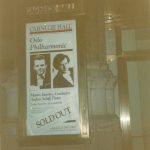
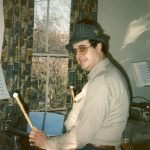
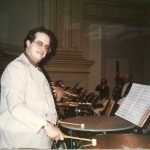
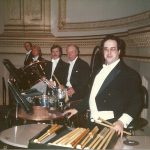
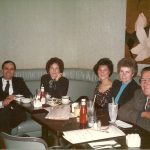
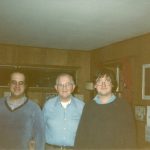
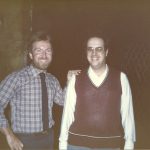
Recent Comments